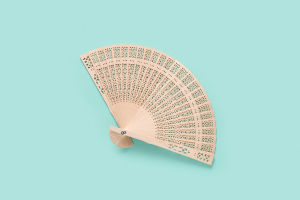Hydrotherapy, the use of water for therapeutic purposes, has been practiced for centuries to promote healing and overall wellness.
One of its key benefits is improving blood circulation, which plays a critical role in maintaining overall health.
Enhanced circulation ensures that oxygen and essential nutrients are efficiently delivered to cells while waste products are effectively removed. Hydrotherapy offers a natural and relaxing way to achieve better circulation, contributing to improved well-being.
Hydrotherapy encompasses various techniques, such as hot baths, cold plunges, contrast therapy (alternating between hot and cold water), whirlpools, and water massages.
Each method works uniquely to enhance circulation, but all rely on water's ability to influence the body's blood flow. The temperature and pressure of water applied during hydrotherapy stimulate blood vessels, promoting better circulation.
Hot water therapy is particularly effective at improving circulation. When the body is submerged in warm water, blood vessels dilate, a process known as vasodilation.
This widening of the blood vessels allows for increased blood flow, which helps deliver oxygen and nutrients more efficiently. The warmth also relaxes muscles, relieving tension and promoting a sense of relaxation.
As circulation improves, the heart can pump blood more effectively, reducing strain on the cardiovascular system.
Cold water therapy, on the other hand, works by constricting blood vessels, a process called vasoconstriction. While this may seem counterproductive, the alternation between hot and cold water — known as contrast hydrotherapy — can be highly beneficial for circulation.
When blood vessels constrict in cold water and then dilate in warm water, it creates a "pumping" effect. This effect helps move blood through the body more efficiently, flushing out toxins and reducing inflammation.
Contrast therapy is especially useful for athletes or individuals recovering from injuries, as it promotes healing and reduces muscle soreness.
Whirlpools and water jets are commonly used in hydrotherapy to improve circulation by combining warmth with gentle pressure. The water jets create a massaging effect that stimulates blood flow to targeted areas.
This type of hydrotherapy helps break down tension in muscles, reduce swelling, and promote relaxation. The combination of heat and water movement improves circulation to deeper tissues, enhancing overall vascular function.
Hydrotherapy exercises, such as water aerobics or swimming, are another effective way to improve circulation. The buoyancy of water reduces the impact on joints, allowing individuals to exercise without putting strain on their body.
The resistance provided by water helps strengthen muscles and improve cardiovascular health, which in turn boosts blood circulation. These exercises are particularly beneficial for people with limited mobility or those recovering from surgery.
Foot baths and hand soaks are simple forms of hydrotherapy that also improve circulation. The hands and feet are rich in blood vessels, and soaking them in warm water can help promote blood flow throughout the body.
Adding essential oils or Epsom salts to the water can enhance the therapeutic effects by reducing inflammation and soothing tired muscles.
The benefits of improved circulation through hydrotherapy extend beyond just physical health. Better circulation can boost energy levels, support immune function, and promote mental well-being.
It can also help alleviate conditions such as headaches, muscle cramps, and joint pain. For individuals with conditions like diabetes, peripheral artery disease, or varicose veins, hydrotherapy can provide relief and enhance overall vascular health.
Hydrotherapy is an effective and natural way to improve blood circulation. By utilizing the properties of hot and cold water, hydrotherapy promotes better blood flow, reduces inflammation, and supports overall health.
Whether through hot baths, whirlpools, contrast therapy, or water-based exercises, incorporating hydrotherapy into your routine can lead to enhanced well-being and a healthier cardiovascular system.


